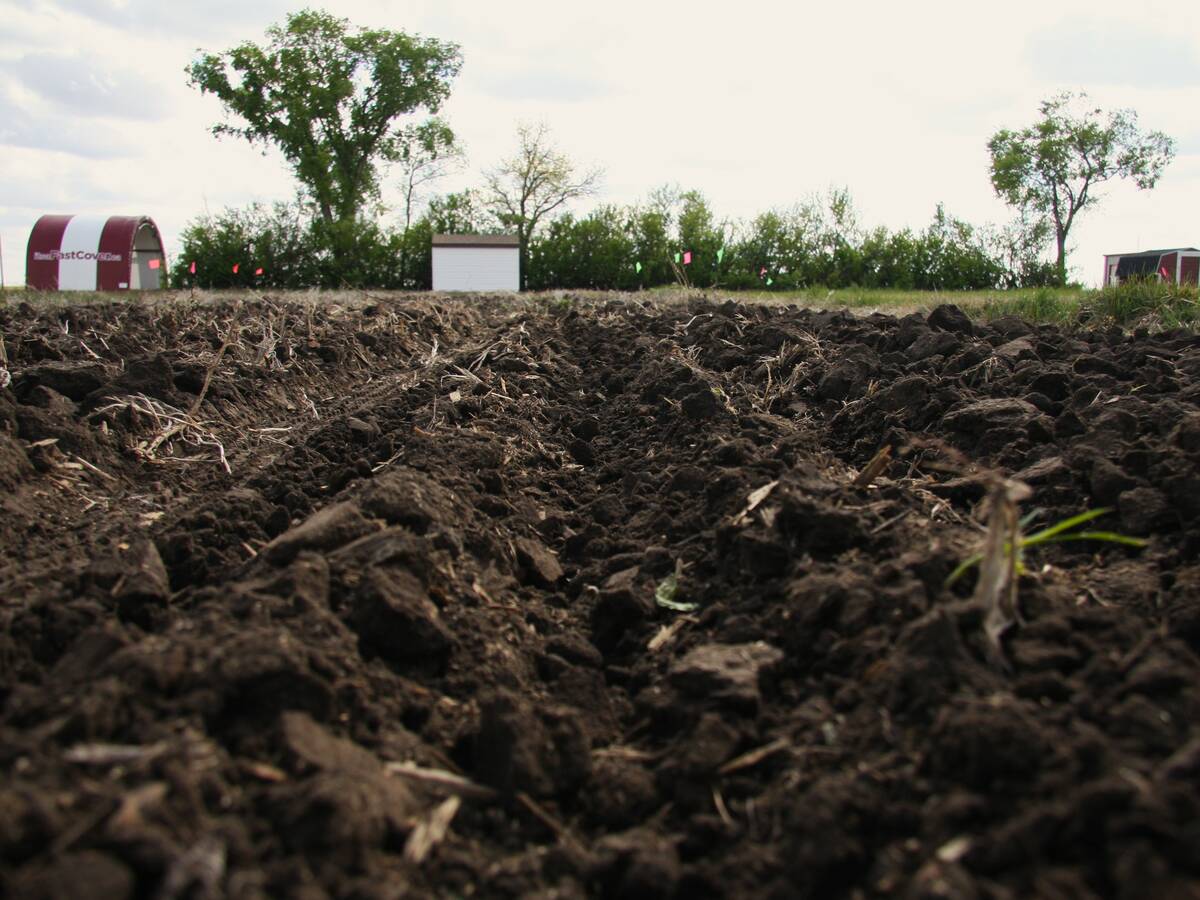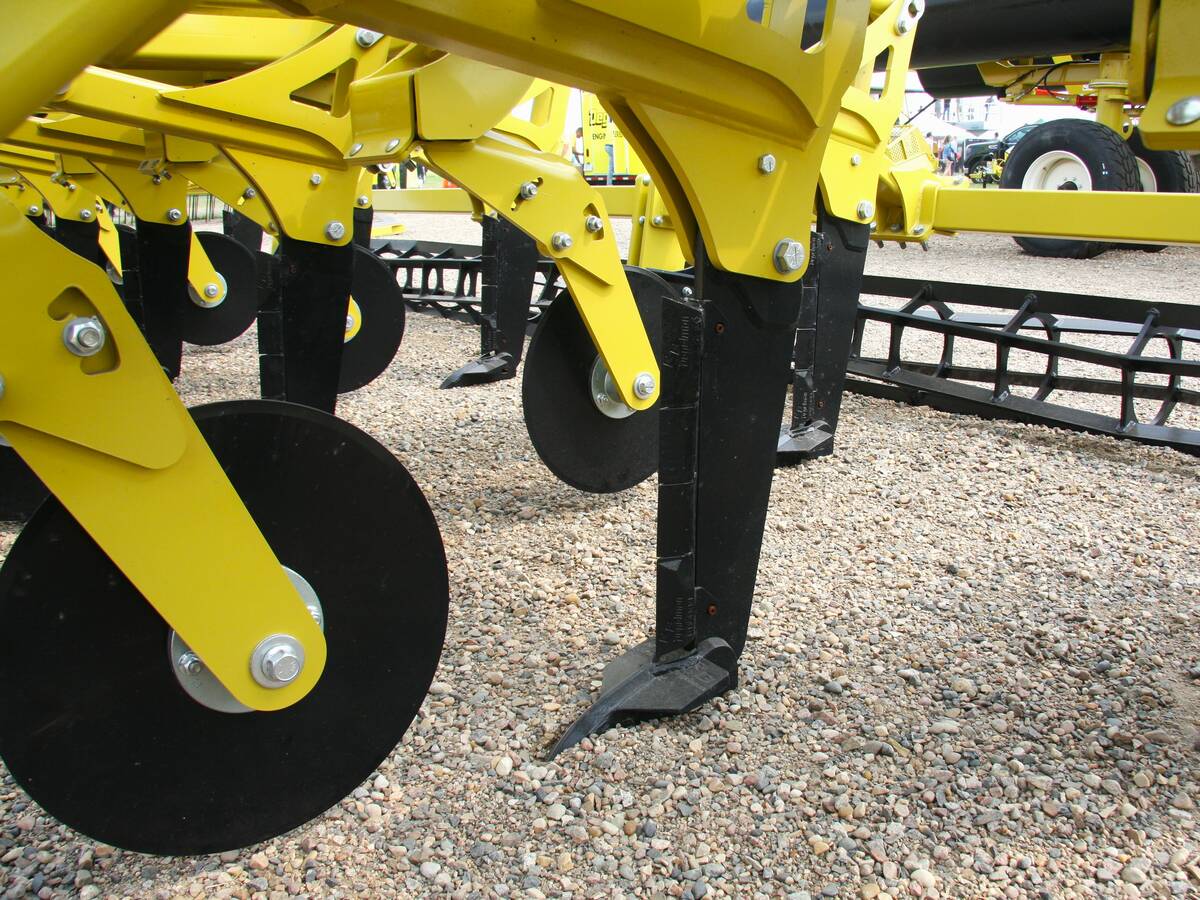If direct seeding and minimum disturbance drills have already been added to the farm operation and improving minimum till for soil moisture is the goal, it may be time to employ additional strategies.
When it comes to issues of water infiltration or subsoil moisture use, compaction may be the culprit, says Jeff Schoenau, Ministry of Agriculture Strategic Research Program Chair in soil nutrient management and professor of soil science at the University of Saskatchewan.
This can be tested for with a penetrometer, but the worst areas are usually approaches, haul roads or habitual loading zones.
Read Also

Defence investments could benefit agriculture
A bump in Canada’s NATO spending commitments could lead to infrastructure investments that would benefit rural areas
READ ALSO: Ways found to keep moisture with minimum till
“Specific areas within a field could potentially benefit from some type of a mitigation method, like sub soiling, to loosen that soil up in that compacted area,” he said.
“Not necessarily doing the whole field, but identifying those areas where there is a compaction issue within the field and then addressing it accordingly.”
Subsoilers, or soil rippers, are typically used to address subsoil compaction that prevents water infiltration, root growth or soil nutrient levels.
Degelman
Degelman is one of a few companies that produces such a piece of equipment, named the Heavy Duty Staggered Ripper. It is one of the first manufacturers to produce a staggered subsoiler; most of the other available implements are straight.
The ripper is available in widths from 21 feet eight inches to 27 feet six inches, and each one has the capability to rip from six to 24 inches deep.
Schoenau recommends a depth of approximately one foot or more, based on some of the research he’s done, to really address identified compacted areas.
When it comes to the subsoiling shanks, there are two options: 30-inch spacing with nine or 11 shanks, or 20-inch with 13 or 15 shanks.
According to Dryden Hubick, one of Degelman’s territory managers, shank choice depends on how aggressive a producer would want to get when subsoilling. The 20-inch option creates “really soft” ground, compared to the 30-inch.
In Western Canada, the 30-inch is the most popular. The ground is a bit sturdier afterward, enabling a seed drill or sprayer to follow soon after if needed.
The interesting part about subsoilers is that while the shanks penetrate the ground and break the compacted soil by creating a kind of underground “rolling,” there is minimal top soil disturbance, depending on the shank.
Degelman has three shank options, with two — the three-quarter inch shank and straight 1.25 inch shank — being for targeted minimum till. The other is the 1.25 inch parabolic for more “aggressive tillage,” acting similar to an old-school cultivator.
“So we call these (straight) shanks actually min-till because all it’s going to do is it’s going to leave a score line, a crack in the ground,” said Hubick.
“Where we have that parabolic inch and a quarter shank there, that’s what’s going to roll the dirt back up on top. We have certain customers and areas that want to bring that nutrients and everything from the bottom to the top.”
The straight is a more popular option because in north-central Saskatchewan, the most common goal is to just crack the hardpan. The three-quarter inch straight will have the least amount of top soil disturbance.
An added benefit is that using a subsoiler isn’t an annual requirement.
“Realistically, every three-to-five-year rotation is what you’re going to do it.… Just with the size of, you know, the air carts and drills and everything, compaction wise and where you want different water to flow and whatnot,” Hubick said.
Many producers are following this plan and seeing noticeable results with water flow and crop appearance.
However, if another piece of equipment doesn’t fit the farm budget or the plan is to double down on addressing the issue, Schoenau has some other recommendations to fight compaction.
Soil health
Some options include increasing organic matter and available nutrients as well as planting forages, deeper rooting crops or winter cereals.
“When you’re growing crops that have an extensive root system, and especially crops like forages, they have a loosening effect on the soil,” he said.
“They add organic matter, and that helps to alleviates some of those issues surrounding high density, which is really a consequence of compaction.”

While forages are the best option for high impacting roots, some producers may not want to take their land out of rotation.
With that in mind, Schoenau shared that about four years ago, research identified certain cash crops such as wheat and canola that root deeper than others, such as peas. As a result, those roots will continue to pull water closer to the surface for a longer period of time.
“Following a crop that mainly takes its water or uses more water from closer to the surface,” he said.
“And then follow that with a crop that now is able to tap into that water down deeper. You’re able to sometimes make a little bit better use of water, have a better water use efficiency over a number of years.”
This also extends to winter cereal crops, which have the additional benefit of being able to effectively use early seasonal moisture.
However, sometimes a tag-team approach can be taken because crop rotations and forages may not be enough. In these cases, soil nutrients may be needed.
Lorne Muller, a product consultant at Back to Your Roots Soil Solutions, said compaction is a result of an imbalance of minerals in the soil, and so there is nothing to “charge” the soil.
“When we’re dealing with compaction, it’s electrical,” he said.
“Soil particles are negatively charged on the edge (and) positively charged on the flat side. We want to structure and stack (it) like a house of cards.”
Unbalanced soil particles will “fall flat” and can cause compaction.
Without balanced nutrients, it doesn’t matter how many times subsoil or soil is worked if the soil particles won’t stack. With this in mind, Muller recommends biologically friendly nutrients such as low salt phosphate, silica, fish fertilizer, humic products and calcium because these products help create the required environment for aerobic microbes.
Back to Your Roots provides these products and will help producers establish an action plan with recommended nutrient products to address their soil needs.
He said that on his farm, they began applying calcium a number of years ago to improve their soil structure. They noticed that since the last application seven years ago, the soil structure remains and is as far down as five to six inches.
“Now, we’ve got structure in the soil. We’ve got water infiltration. We’ve got the environment for biology because soil health is all about biology,” he said.
“They require oxygen. Every nutrient that we apply in agriculture has to pick up one or more oxygen molecules to become plant available. If the soil is tight and compacted and there’s no oxygen, how efficient is that?”
This connects with theory of the “ABCs of soil health”:
- A for air and ensuring oxygen is in the soil.
- B is biology, as in fungal and bacterial microbes.
- C is for carbon in the soil.
Improving the structure affects the aerobic zone of the soil between an inch and 1.5 inches per year when using the correct nutrients for the soil’s needs.
Once the structure is in the soil, there is more longevity in it as the aerobic zone positively impacts the soil environment to allow for better nutrient cycling through the microbes. This is important for making nutrients available to the plant and helping build the soil carbon.
Carbon plays an important role for fungal biology. To fulfill this role, though, it must be in a proper ratio with nitrogen, at approximately 18 to one , so that fungal microbes truly work.
“Using the calcium and the microbes, and feeding the microbes to start the process in the soil, is the first step,” Muller said.
“And then when you’re feeding the plant, making sure that you’re using biologically friendly products to feed the plant.”
The first step to all of this is investigating the soil a producer has, learning what’s happening in it and what the roots of a crop show. From there, a producer can consider their production goals, crop rotations and how they would like to meet those goals.
“Make yourself familiar with this kind of stuff. This is your number one asset on the farm,” Muller said.
“You screw up with your tractor or combine, you can trade it out. You can’t trade your soil up. You got what you got. You got to maintain it.”
















